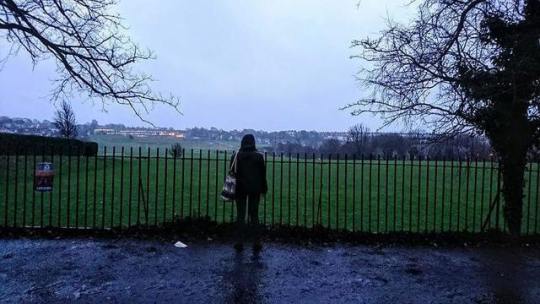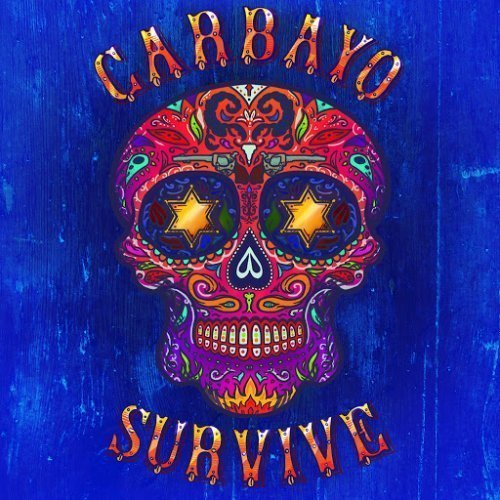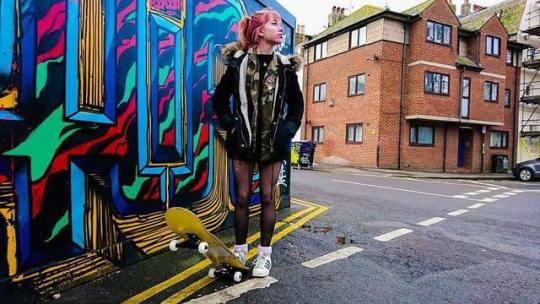#longlook
Explore tagged Tumblr posts
Text
Not anti-gender like agender, antigender like inhuman. Not inhuman like a therian, inhuman like thorazine. Inhuman like a mollusc, tiny eyes staring up from the depths of a shell eyes at the bottom of a well. Isolated twin circles ringed by black, muscle strain from focusing so far away. Unblinking come and get me motherfucker stare hard enough and be too crazy to deal with stare hard enough and be too crazy to not. Fightflight freeze heels in the dirt eyes watching god.
Not godform like a mystic, not devout like a worshipper, music in the cicadas ringing in hazy half-dreamed starvation hallucinations. Notes that only form in the echo between the hillsides.
Start to speak on the boring chuuni philosopho-psychiatric sickness and it becomes a play-pretend. Taxonomizing recedes the realfakedreamscape. Solidarity in the longlooks and heavysighs where ghosts live, only. Only right to tell in drunkenhigh rambles of intimacy where it lives, big beautiful and imbued with meaning, where the secret life flourishes that we laugh at ourselves in shame for later.
Guthatred for the words and gutfear of the wordless things. Unseen in the unexpressed and untrue in the spoken.
4 notes
·
View notes
Photo

#deep #deepthoughts #green #grass #photography #photoshoot #raindrops #rain #badweather #gloom #gloomy #moody #love #art #loveart #look #longlook #deepthoughtslook #contrast #portrait #portfolio #edgy #edgybrighton #brighton #brightonvarndeancollege (at Varndean College) https://www.instagram.com/p/BPpDCqjDdpX/?igshid=penljyjhnru5
#deep#deepthoughts#green#grass#photography#photoshoot#raindrops#rain#badweather#gloom#gloomy#moody#love#art#loveart#look#longlook#deepthoughtslook#contrast#portrait#portfolio#edgy#edgybrighton#brighton#brightonvarndeancollege
5 notes
·
View notes
Text
i love goliath groupers. you look at a picture of one and you think “yeah thats probably about as long as my arm, like 2-ish feet”
THINK AGAIN BUCKO THEY’RE 8 FEET LONG

LOOK AT THIS SHIT I LOVE IT
#im doing an earth science project#goliath groupers are one of my favorite animals#at least in my top 10#tw ocean#tw fish#theyre endangered :(#support conservationists in returning the ban on fishing them#bc florida lifted it for some reason????
8 notes
·
View notes
Photo

Adventurer Little Bolin Longlook
4 notes
·
View notes
Text
Caught in the Headlights
An rp with @hellionpolecat !!
The moon was high over the Bullet Farm that night, full and filled with mischief. Gatt couldn’t sleep well, which was an extremely unusual occurrence for him, who was usually comforted by the mountain of warm bodies around him. Tonight was different, filled with a nervous energy that kept him awake throughout. He couldn’t help his nerves as he knew that something big would happen tomorrow. Wether that was good or bad would just have to be a surprise...
At first light of morning the pile of sleeping warboys began to rouse. They yawned, stretched, and made their daily trek to the big holding place where they were each given a strip of dried jerky before sent off to work the farm. Gatt was still on edge over the restless night as he chewed his hard jerky. Taking his place on his watchtower, he grabbed his trusty longlookers and sighed heavily, waiting to see what the wastes would drag in this time.
137 notes
·
View notes
Text
Ideation/Research
IDEO p.37
Secondary Research
Getting up to speed on your challenge is crucial to success in the eld.
Human-centered design is all about talking with people about their challenges, ambitions, and constraints. But as you move through the Inspiration phase, there will be moments where you’ll need more context, history, or data than a man-on-the-street style Interview can afiord. Social sector challenges can be really thorny, which is why Secondary Research, whether done online, by reading books, or by crunching numbers, can help you ask the right questions. At IDEO.org, we nd that a rm foundation of knowledge is the best place from which to tackle a design challenge.
Once you know your design challenge, it’s time to start learning about its broader context. You can bone up quickly by exploring the most recent news in the field. Use the Internet, newspapers, magazines, or journals to know what’s new.
02 Try to find recent innovations in your particular area. They could be technological, behavioral, or cultural. Understanding the edge of what’s possible will help you ask great questions.
03 Take a look at other solutions in your area. Which ones worked? Which ones didn’t? Are there any that feel similar to what you might design? Any solutions that have inspired you to make one of your own?
04 Because Interviews (p. 39) can be highly subjective, use your Secondary Research to get the facts and figures you’ll need to understand the context of your challenge.
IDEO p.39 (same as user test)
Interview
There’s no better way to understand the hopes, desires, and aspirations of those you’re designing for than by talking with them directly.
Interviews really are the crux of the Inspiration phase. Human-centered design is about getting to the people you’re designing for and hearing from them in their own words. Interviews can be a bit daunting, but by following these steps below you’ll unlock all kinds of insights and understanding that you’ll never get sitting behind your desk. Whenever possible, conduct your Interviews in the person’s space. You can learn so much about a person’s mindset, behavior, and lifestyle by talking with them where they live or work.
No more than three research team members should attend anysingle Interview so as to not overwhelm the participant or crowd the location. Each team member should have a clear role (i.e. interviewer, note-taker, photographer).
02 Come prepared with a set of questions you’d like to ask. Startby asking broad questions about the person’s life, values, and habits, before asking more specific questions that relate directly toyour challenge.
03 Make sure to write down exactly what the person says, not what you think they might mean. This process is premised on hearing exactly what people are saying. If you’re relying on a translator, make sure he or she understands that you want direct quotes, not the gist of what the person says.
04 What you hear is only one data point. Be sure to observe the person’s body language and surroundings and see what you can learn fromthe context in which you’re talking. Take pictures, provided you get permission first.
IDEO p.80
Find Themes
As you share your learnings with your team, patterns and themes are likely to emerge. Here’s how to spot and make sense of them.
Once you’ve had a chance to Download Your Learnings (p. 77) and Share Inspiring Stories (p. 78), you’re ready to Find Themes. Take a good longlook across your Interviews (p. 39), Analogous Inspiration (p. 53), and other learnings. Have any patterns emerged? Is there a compelling insight youheard again and again? A consistent problem the people you’re designing for face? What feels signi cant? What surprised you? These themes are bound to change, but as you move through the Ideation phase, continue to Find Themes and sort out what they mean.
TIME60-90 minutes
DIFFICULTY Moderate
02 03 04
Gather your team around your Post-its from previous Ideation sessions. Move the most compelling, common, and inspiring quotes, stories, or ideas to a new board and sort them into categories.
Look for patterns and relationships between your categories and move the Post-its around as you continue grouping. The goal is to identify key themes and then to translate them into opportunities for design.
Arrange and rearrange the Post-its, discuss, debate, and talk through what’s emerging. Don’t stop until everyone is satisfied that the clusters represent rich opportunities for design.
Identifying these themes will help you Create Frameworks (p. 89) and write Design Principles (p. 105).
IDEO p.94
Brainstorm
Energiez your team and drum up a staggering amount of innovative ideas.
At IDEO.org, we use Brainstorms to tap into a broad body of knowledgeand creativity. Over the course of your project you should do them not only with your design team, but also with partners and the people you’re designing for. Refer to Brainstorm Rules (p. 95) for the speci cs of what makes for a fruitful brainstorm, but remember that the best policy is to promote openness, lots of ideas, and creativity over immediate feasibility. Brainstorms work best when the group is positive, optimistic, and focused on generating as many ideas as possible.
Pass out pens and Post-its to everyone and have a large piece of paper, wall, or whiteboard on which to stick them.
02 Review the Brainstorm Rules before you start.03 Pose the question or prompt you want the group to answer. Even better if
you write it down and put it at the top of the paper, wall, or whiteboard.
04 As each person has an idea, have her describe to the group as she puts her Post-it on the wall or board.
05 Generate as many ideas as possible.
IDEO p.108
Create a Concept
Move from a handful of ideas and insights into a fully-fiedged concept, one that you’ll rene and push forward.
So far you’ve come up with, shared, and even discarded scores of ideas. You further re ned things as you Bundled Ideas (p. 97) and now it’s time to turn them into a concept. A concept is more polished and complete than an idea. It’s more sophisticated, something that you’ll want to test with the people you’re designing for, and it’s starting to look like an answer to your design challenge. This is the moment where you move from problem to solution and it drives everything that comes next.
Take the ideas that you bundled and put them up on the wall on Post-its.
02 Now might be a good time to Create Frameworks (p. 89) out of those bundled ideas. Start to visualize where your bundles are pointing, but think especially hard about making them into a system.
03 Don’t worry too much about all the details of your solution now—you don’t need a finely tuned Funding Strategy (p. 145) just yet. The goal is to get a robust, flexible concept that addresses the problem you’re trying to solve.
04 Keep referring back to your design challenge. Are you answering it? Are there elements missing in your solution? What else can you incorporate to come up with a great solution?
05 Like the rest of human-centered design, there’s a bit of trial and error here. And creating a concept means you’ll probably create a couple that don’t work out. That’s fine.
IDEO p.113
Storyboard
A quick, low-resolution prototype, Storyboards can help you visualiez your concept from start to nish.
You don’t need to be a great artist to create a great Storyboard. By visually plotting out elements of your product or service, you can learn a lot about your idea. Not only will this method help you re ne what your idea is, it can also help you understand who will use it, where, and how. Like all prototypes, the idea here is to make something really rough as a way to help you think the idea through. It’s amazing what putting pen to paper can reveal.
Determine what part of your idea you want to Storyboard. You don’t have to Storyboard the entire thing, and you may find it useful to test a component of your idea like an interaction, or how a customer finds out about your product. Spend no more than 30-45 minutes drawing how your ideas work. Use the series of comic book-style frames on p. 178 or make your own. This will help you spotlight key moments and build a short narrative. Don’t get hung up on your drawing abilities. It’s more important that a Storyboard helps you fully think through your concept than create something that looks beautiful. Once you’re done, act out the Storyboard to your team for feedback.
Double diamond (Step.1)
Observation
What is it?
Watching people as they interact with products, services and environments and identifying areas where problems occur.
What is it useful for?
Depending on your project, you might want to make general observations of something that already exists. For example, how people move around a shopping centre, or how people in the street use their mobile phones. Or you could test a design in a specific scenario.
How can I do it?
Pick your scenario and record your observation with photos or video. This lets you analyse the material after the event (and even catch important details you might have missed, like the expressions on people's faces). The photos or videos can also provide evidence to show to partners or stakeholders in your project.
Being your users
What is it?
A method to put yourself in the position of your user.
What is it useful for?
Building understanding of and empathy with the users of your product, service or environment.
How can I do it?
Identify your target user group, then carry out research to identify user scenarios and typical tasks users undertake.
Put yourself in the user's situation for a couple of hours, a day or even a week. Carry out the tasks that they would do, in the environments where they would do them. This could mean, for example, working on a supermarket checkout or driving an unfamiliar car for a week. Make detailed notes or keep a diary to record your thoughts.
You could also use empathy tools to simulate specific user characteristics. For example, wearing gloves and tinted glasses can simulate some of the physical effects of old age, or a pregnancy suit with a weighted 'bump' can simulate what it would be like for a pregnant woman to use your service.
Brainstorming
What is it?
Brainstorming is a method to enable a team to work together to generate ideas quickly and effectively.
What is it useful for?
Generating ideas quickly in response to a problem.
How can I do it?
Start with a warm-up. Brainstorm a fun problem such as "How can we get every Monday morning off work?"
State the problem clearly and concisely.
Don't lose anything. Write your ideas on flipcharts, or on the wall.
Number your ideas and set a target – to get to 100, for example.
Keep the focus sharp: edgy and precise statements are better than fuzzy ones.
Keep the ideas flowing, be responsive and keep trying to approach the problem from different viewpoints.
Brainstorming will be most effective if you keep to these ground rules:
Defer judgment – build on ideas to make them better
Don't criticise!
One conversation at a time
Go for quantity – the more ideas the better
Have wild ideas – every idea is valid
Stay focused on the problem in hand
Be visual – draw ideas or represent them with whatever is to hand
After brainstorming, a smaller group can cluster the ideas for voting.
Fast visualisation
What is it?
Generating quick sketches of your ideas.
What is it useful for?
Visualising ideas will make them easier to understand and modify, and will in turn stimulate new ideas.
How can I do it?
Sketch ideas during a group brainstorm. The drawings don't need to be perfect: they only need to have just enough detail to communicate the idea.
Secondary research
What is it?
Setting aside time to explore a range of published information about your customers, your competitors and political, social and economic trends.
What is it useful for?
It’s vital to explore and understand the context you’re working in and to stay up to date with the latest developments.
How can I do it?
Search online or at your local reference library (where you can ask for help). Services like Google Alerts allow you to receive automated updates about new articles in your area of interest as they are published.
Double diamond (Step.2)
Comparing notes
What is it?
Visually sorting and prioritising a large amount of information about a problem.
What is it useful for?
When presented with many pieces of information, it's not always obvious where to start. Sorting and grouping these ideas in order is often the best way to begin.
How can I do it?
Write all of your ideas on individual sticky notes.
Reduce the number of notes by rejecting low priority items and combining notes that deal with similar things.
Compare pairs of notes in turn and put the most important one higher up the list (using the same criteria for all comparisons).
When no more swaps can be made, the list will be in order of importance.
For example, if you wanted to determine the most important factors in choosing a pushchair you could take all the potential considerations from your research (or brainstorm them) and then compare notes to determine the most important considerations. This method also works for ranking things other than by importance, for instance in order of speed, cost, quality or desirability.
You could also use this method with users to get them to put their considerations in order of importance, for example, "What are the most important considerations connected with buying a new home?".
0 notes
Text
Big Holin Longlook https://bit.ly/3a3zXWs - #giochidatavolo #modellismo #warhammer40k #dungeonsanddragons #miniature #scenici #paintingwarhammer #warhammerworld #citadelpaints #minis #boardgames #tabletop #giochiamo #tabletopgames #giochidiruolo #boardgame #gdr #nerd #miniaturepainting #wargames
0 notes
Link

#heightgrow#increaseheight#gettaller#growtaller#longlooks#heightgrowthsupplements#shortheight#heightgrowthpills
0 notes
Text
Carbayo - Survive (2017)
Carbayo – Survive (2017)

“The Longlook Ride” is CARBAYO’s first solo album, recorded at Arcane Planet Studios in Salamanca and mastered in Nashville (USA) by 5-time Grammy winner Richard Dodd (Tom Petty, Roy Orbison,Robert Plant, George Harrison, etc). (more…)
View On WordPress
0 notes
Text
El músico y compositor Álex Carbayo ofrece mañana un concierto en el Liceo de Salamanca
El músico y compositor Álex Carbayo ofrece mañana un concierto en el Liceo de Salamanca
EUROPA PRESS
El músico y compositor Álex Carbayo, después de su cuarta gira por Estados Unidos, ofrecerá este viernes un concierto en el Teatro Liceo de Salamanca, en el que hará una retrospectiva del que fue su primer disco-novela ‘The longlook ride’.
Este disco cuenta la historia de un ‘cowboy’ cazarrecompensas en la América profunda del siglo XIX y, en el concierto, dará vida a las canciones…
View On WordPress
0 notes
Text
Like cool cars, wine, movies? Check out this Paradise Valley modern estate
Real estate agents David Larchez of Silverhawk Realty and Johnathon De Young of Russ Lyon Sotheby’s International Realty have brokered a $6 million deal in Paradise Valley.
Larchez was the listing agent and De Young the buyer’s broker for the sale of 7001 N Longlook Road — a 3-acre, 8,893-square-foot retreat near Tatum Boulevard and Clearwater Parkway.
The property includes a home theater garage space for nine cars (including a seven-car lower level area), a heated pool and spa, 700-bottle…
0 notes
Photo

#photography #photographer #art #art🎨 #loveart #indie #indiephoto #skateboard #edgy #happy #smile #smiles #smilesallaround #colourpop #color #colour #colorfull #colourful #skaterkid #brighton #brightontown #edgybrighton #brightonlife #longlook #look #deeplook #deepthoughts #deepthought (at Brighton) https://www.instagram.com/p/BPqbljOjJ09/?igshid=1wwvb2oygvu1y
#photography#photographer#art#art🎨#loveart#indie#indiephoto#skateboard#edgy#happy#smile#smiles#smilesallaround#colourpop#color#colour#colorfull#colourful#skaterkid#brighton#brightontown#edgybrighton#brightonlife#longlook#look#deeplook#deepthoughts#deepthought
1 note
·
View note
Text
Like cool cars, wine, movies? Check out this Paradise Valley modern estate
Real estate agents David Larchez of Silverhawk Realty and Johnathon De Young of Russ Lyon Sotheby’s International Realty have brokered a $6 million deal in Paradise Valley. Larchez was the listing agent and De Young the buyer’s broker for the sale of 7001 N Longlook Road — a 3-acre, 8,893-square-foot retreat near Tatum Boulevard and Clearwater Parkway. The property includes a home theater garage space for nine cars (including a seven-car lower level area), a heated pool and spa, 700-bottle… from DIYS http://ift.tt/2rojJ2O
0 notes
Video
A #nice #longlook at #lake #mondarra whilst the #storm starts to come in late #thisafternoon (at Lake Moondarra)
0 notes
Text
Gatt has spotted the splash of red first, had alerted the others and was told it was a scrap shipment coming. He huffed, still watching the tiny glitch of red as it got closer and closer. Soon he could make out the individual vehicles and the outline of a figure with red boots. He laughed. Such a gaudy color, he loved it. Whoever wore such a color proudly in the wastes, a target, must’ve had some big balls.
He scanned he horizon for a while longer before going back to the convoy now that they were closer. His eyes bugged as he saw the wisps of hair behind Red Boots. A warboy with long hair? Not allowed! A... A woman? He was astonished as the vehicles were led into the garage. He kept his longlookers on the woman as the party began unloading the scrap. He smiled as he watched her talk to a warboy who pointed away from the vehicles, that had of course broken down. ‘Fucken Gasboys don’t know a cylinder from tha exhaust pipe. Shoulda kept a Citadel mechanical to keep ‘em runnin an gunnin.’
He was unaware that the woman was now spying on HIM.
Caught in the Headlights
An rp with @hellionpolecat !!
The moon was high over the Bullet Farm that night, full and filled with mischief. Gatt couldn’t sleep well, which was an extremely unusual occurrence for him, who was usually comforted by the mountain of warm bodies around him. Tonight was different, filled with a nervous energy that kept him awake throughout. He couldn’t help his nerves as he knew that something big would happen tomorrow. Wether that was good or bad would just have to be a surprise…
At first light of morning the pile of sleeping warboys began to rouse. They yawned, stretched, and made their daily trek to the big holding place where they were each given a strip of dried jerky before sent off to work the farm. Gatt was still on edge over the restless night as he chewed his hard jerky. Taking his place on his watchtower, he grabbed his trusty longlookers and sighed heavily, waiting to see what the wastes would drag in this time.
137 notes
·
View notes
